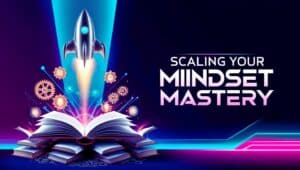In today’s fast-paced and ever-evolving world, personal development has become a cornerstone of achieving both personal and professional success. Whether you’re striving for a promotion at work, aiming to build stronger relationships, or seeking to enhance your overall well-being, setting personal development goals can provide you with a structured roadmap for self-improvement and career advancement. In this article, we’ll delve deep into the art of setting effective personal development goals, provide illustrative examples, and offer practical tips on how to bring these goals to fruition.
Understanding Personal Development Goals

Personal development goals are specific, intentional objectives that individuals set to enhance various aspects of their skills, knowledge, and overall personal growth. These goals cover a wide array of life facets, including career, education, health, relationships, and more. By setting personal development goals, you can channel your efforts towards areas that require improvement, ultimately working towards becoming the best version of yourself.
The Multi-Dimensional Nature of Personal Development
Personal development is not a one-size-fits-all concept. It spans across multiple domains of life, each contributing uniquely to your overall growth. Career goals can enhance professional skills, while personal growth goals foster emotional intelligence and well-being. By understanding the interconnected nature of these domains, you can set goals that are comprehensive and holistic.
The Psychological Benefits of Goal Setting
Setting personal development goals is more than just a strategic exercise; it plays a vital role in psychological health. Goals provide a sense of direction and purpose, helping you to navigate life’s complexities. The clarity that goals bring can significantly reduce anxiety and stress, as you become more focused on actionable steps rather than being overwhelmed by the abstract notion of improvement.
Aligning Goals with Personal Values
To create effective personal development goals, it’s crucial to align them with your core values and long-term objectives. When your goals resonate with your personal values, you’re more likely to remain committed and motivated. This alignment ensures that your pursuit of growth is not just a checklist of tasks but a meaningful journey that enriches your life.
How to Set Personal Development Goals
Setting effective personal development goals involves a strategic process that requires introspection, planning, and continuous adjustment. By following a structured approach, you can create achievable objectives that align seamlessly with your personal and professional aspirations.
1. Identify Your Priorities
Begin by conducting a comprehensive self-assessment to identify areas where you want to improve. Reflect on your current situation, considering both your strengths and weaknesses. This introspection is key in determining which aspects of your life require attention and focus, setting the stage for targeted growth.
Conducting a SWOT Analysis
A SWOT analysis (Strengths, Weaknesses, Opportunities, Threats) can be a valuable tool in identifying your priorities. By evaluating internal and external factors that influence your personal growth, you can gain insights into areas that need development and opportunities for enhancement.
Reflecting on Past Experiences
Take time to reflect on past experiences and achievements. Consider what has worked well for you and where you encountered challenges. This reflection can offer valuable lessons and insights, guiding you in setting future goals that build on past successes.
Consulting with Mentors or Advisors
Engaging with mentors, coaches, or trusted advisors can provide an external perspective on your priorities. These individuals can offer guidance, share their experiences, and help you pinpoint areas that may have been overlooked in your self-assessment.
2. Set SMART Goals

To ensure your personal development goals are effective and actionable, adopt the SMART criteria:
- Specific: Clearly define what you want to achieve in precise terms.
- Measurable: Establish clear criteria for tracking your progress and success.
- Achievable: Set realistic goals that challenge you but remain within reach.
- Relevant: Ensure your goals align with your broader values and long-term plans.
- Time-bound: Assign a specific timeline or deadline for achieving your goals.
Crafting Clear and Concise Goals
When setting goals, clarity is key. Break down complex objectives into clear and concise statements that leave no room for ambiguity. The more specific your goals, the easier it is to plan and execute the steps needed to achieve them.
Creating a Measurement Plan
Measurement is a crucial component of the SMART framework. Develop a detailed plan outlining how you will measure progress and success. This could include quantitative metrics, such as time spent on a task, or qualitative measures, like feedback from peers.
Evaluating the Feasibility of Your Goals
While ambition is important, so is realism. Evaluate whether your goals are feasible given your current resources, time constraints, and external circumstances. Adjusting your goals to ensure they are achievable can prevent burnout and maintain motivation.
3. Break Goals into Smaller Steps
Large goals can often seem overwhelming, making it difficult to know where to start. Breaking them down into smaller, manageable steps can make the process more achievable and less daunting.
Developing a Step-by-Step Action Plan
Create a detailed action plan that outlines the specific steps needed to achieve each goal. This plan should include timelines, resources required, and any potential obstacles you might encounter along the way.
Prioritizing Tasks for Maximum Impact
Not all tasks carry the same weight. Prioritize tasks based on their impact and urgency to ensure that you’re focusing your efforts where they matter most. This approach helps maintain momentum and keeps you on track toward your ultimate objective.
Leveraging Milestones for Motivation
Set milestones along the way to your larger goal. These milestones act as checkpoints, providing opportunities to celebrate progress and reassess your strategies if needed. Achieving milestones boosts motivation and builds confidence in your ability to reach the final goal.
4. Monitor Your Progress
Regular monitoring of your progress is essential to ensure you’re on track to achieving your personal development goals. This involves assessing your achievements, identifying any obstacles, and making necessary adjustments to your plan.
Establishing a Regular Review Schedule
Set aside regular intervals for reviewing your progress. This could be weekly, monthly, or quarterly, depending on the nature of your goals. Consistent reviews allow for timely course corrections and ensure that you’re continually moving forward.
Analyzing Achievements and Setbacks
During each review, analyze both your achievements and setbacks. Understanding what worked and what didn’t can provide valuable insights for future goal-setting and strategy refinement.
Adapting Your Plan to Changing Circumstances
Life is dynamic, and circumstances can change unexpectedly. Be prepared to adapt your goals and plans as needed, maintaining flexibility without losing sight of your overarching objectives.
Transform Your Life Today
Learn powerful strategies that will accelerate your personal growth journey!
Examples of Personal Development Goals
Here are some diverse examples of personal development goals that can inspire you to set your own objectives across different life domains:
1. Career Development Goals
Career development goals focus on enhancing professional skills and advancing your career trajectory.
Mastering a New Technology
In today’s technology-driven workplace, staying updated with the latest tools and platforms is crucial. Set a goal to master a new technology relevant to your industry, positioning yourself as a valuable asset in your field.
Expanding Your Professional Network
Building a robust professional network can open doors to new opportunities. Set a goal to attend industry events or engage in online communities, fostering connections that can support your career growth.
Seeking Leadership Opportunities
Aspiring to leadership roles requires developing specific skills. Set a goal to volunteer for leadership positions within your organization or community, gaining practical experience and honing your leadership abilities.
2. Personal Growth Goals
Personal growth goals are centered around enhancing self-awareness, emotional intelligence, and overall personal well-being.
Cultivating a Growth Mindset
Adopting a growth mindset can transform your approach to challenges and setbacks. Set a goal to practice resilience and embrace learning opportunities, viewing failures as stepping stones to success.
Enhancing Self-Compassion
Self-compassion is a critical component of emotional well-being. Set a goal to practice self-kindness and forgiveness, reducing self-criticism and fostering a healthier relationship with yourself.
Engaging in Creative Pursuits
Creative activities can significantly boost personal growth and satisfaction. Set a goal to engage in a creative pursuit, such as painting, writing, or music, allowing you to express yourself and tap into your innate creativity.
3. Health and Well-being Goals
Health and well-being goals focus on improving physical and mental health, contributing to a balanced and fulfilling life.
Establishing a Consistent Exercise Routine
Regular physical activity is essential for overall health. Set a goal to establish a consistent exercise routine that aligns with your interests and lifestyle, enhancing both physical fitness and mental clarity.
Prioritizing Sleep and Rest
Quality sleep and rest are foundational to well-being. Set a goal to prioritize sleep hygiene, ensuring adequate rest and recovery to support your daily activities and long-term health.
Practicing Mindfulness and Meditation
Mindfulness and meditation can reduce stress and enhance mental well-being. Set a goal to incorporate mindfulness practices into your daily routine, cultivating a sense of peace and presence in your life.
4. Relationship Goals
Relationship goals aim to improve communication, strengthen connections, and foster deeper interpersonal relationships.
Building Empathy and Understanding
Empathy is key to strong relationships. Set a goal to practice active listening and perspective-taking, enhancing your ability to understand and connect with others on a deeper level.
Resolving Conflicts Constructively
Conflict is a natural part of relationships. Set a goal to learn and apply conflict resolution strategies, fostering healthier and more productive interactions with others.
Creating Meaningful Rituals
Rituals can strengthen bonds and create lasting memories. Set a goal to establish meaningful traditions with loved ones, such as weekly family dinners or annual trips, deepening your connections over time.
Achieving Your Personal Development Goals
Setting personal development goals is just the beginning. To achieve them, you need to take consistent action and remain committed to your objectives. Here are some actionable tips to help you succeed:
1. Create a Plan
Developing a detailed action plan is crucial for turning your goals into reality. This plan should outline the steps you need to take, including specific tasks, deadlines, and any resources or support you may require.
Mapping Out Your Action Steps
Break down each goal into a series of actionable steps. This mapping process provides a clear path forward, ensuring you know exactly what needs to be done and when.
Identifying Necessary Resources
Consider what resources you’ll need to achieve your goals, whether it’s time, money, or expertise. Identifying these resources in advance allows you to plan accordingly and avoid potential roadblocks.
Setting Realistic Timelines
Establish realistic timelines for each step in your action plan. While deadlines are important for maintaining momentum, it’s equally important to be flexible and adjust them as needed to accommodate unforeseen challenges.
2. Stay Accountable

Accountability is a powerful motivator in the pursuit of personal development goals. Sharing your goals with a trusted friend, family member, or mentor can help keep you accountable and motivated throughout your journey.
Choosing the Right Accountability Partner
Select an accountability partner who understands your goals and can provide constructive feedback and support. This person should be someone you trust and respect, capable of offering encouragement and holding you accountable.
Scheduling Regular Check-Ins
Regular check-ins with your accountability partner can provide an opportunity to discuss progress, challenges, and next steps. These conversations can help you stay focused and committed to your goals.
Embracing Constructive Feedback
Be open to constructive feedback from your accountability partner. This feedback can offer valuable insights and perspectives, helping you refine your strategies and approach to goal achievement.
3. Celebrate Your Achievements
Celebrating your accomplishments, no matter how small, is an important part of the personal development journey. Recognizing your progress boosts motivation and reinforces your commitment to growth.
Acknowledging Milestones
Take time to acknowledge and celebrate milestones along the way to your larger goals. These celebrations provide an opportunity to reflect on your progress and appreciate the effort you’ve invested.
Reflecting on Growth and Learning
In addition to celebrating achievements, take time to reflect on the growth and learning that occurred along the way. This reflection can deepen your understanding of the personal development process and enhance your future goal-setting efforts.
Sharing Success with Others
Share your successes with others, whether it’s through social media, a personal blog, or conversations with friends and family. Sharing your achievements can inspire others and reinforce your own sense of accomplishment.
4. Be Flexible
Life is unpredictable, and circumstances can change unexpectedly. Being flexible and adaptable allows you to adjust your goals and plans as needed without losing sight of your overarching objectives.
Embracing Change and Uncertainty
Embrace change and uncertainty as natural parts of life. By cultivating a mindset that welcomes adaptation, you can navigate unexpected challenges with resilience and creativity.
Reevaluating Goals and Priorities
Regularly reevaluate your goals and priorities to ensure they remain aligned with your current values and circumstances. This reevaluation process allows you to make necessary adjustments and stay on track toward meaningful growth.
Maintaining a Long-Term Perspective
Keep a long-term perspective in mind, recognizing that personal development is a lifelong journey. While short-term goals are important, they are part of a broader trajectory of continuous improvement and self-discovery.
Conclusion
Setting effective personal development goals is a powerful way to enhance your skills, knowledge, and overall well-being. By following the steps outlined in this article, you can create a clear and actionable roadmap for personal growth and achieve your objectives. Remember to stay committed, celebrate your successes, and remain flexible in your approach. With dedication and perseverance, you can unlock your full potential and lead a more fulfilling and enriched life.
Related: Leadership insights from Forbes











